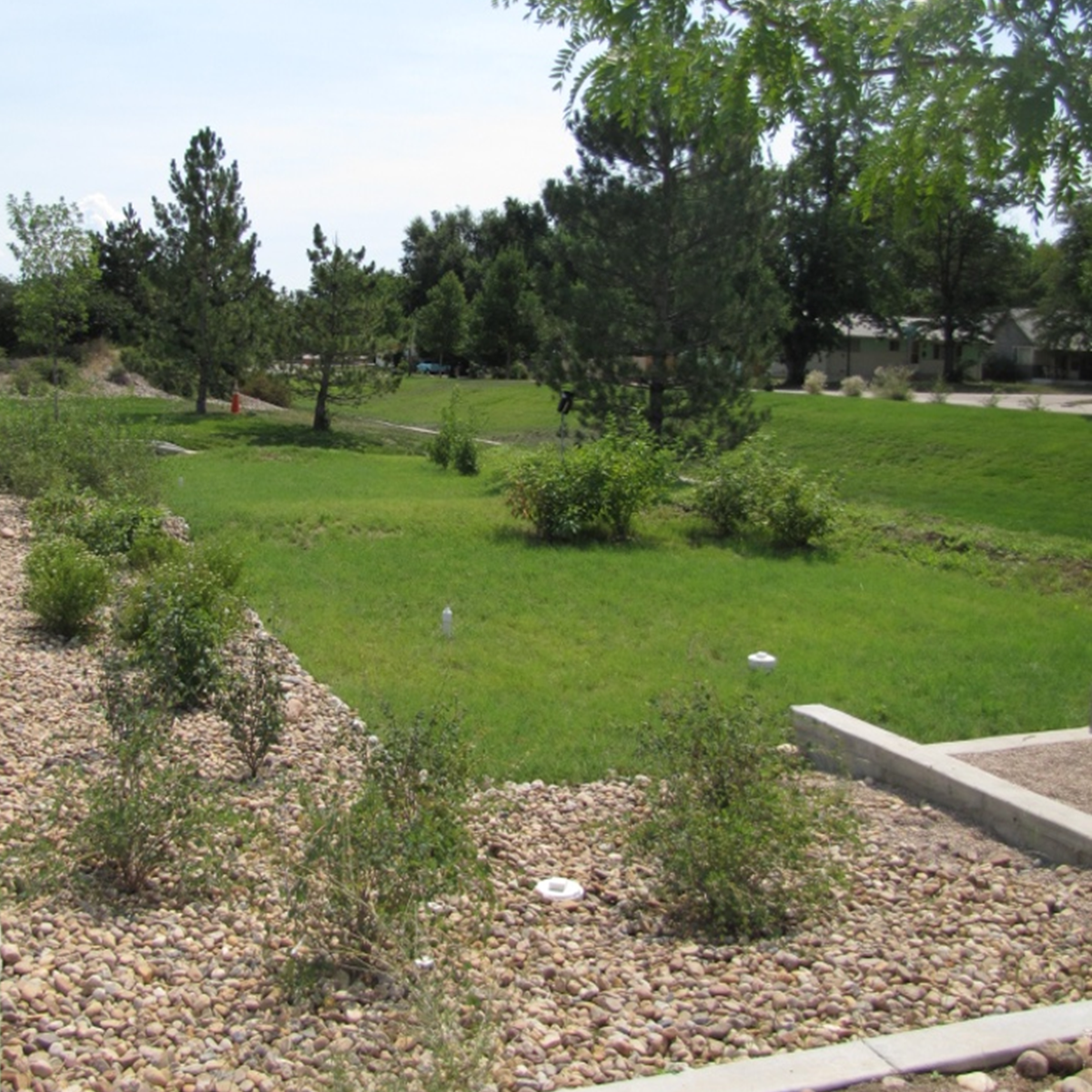This study assessed the performance of newly constructed bioretention cell in Fort Collins, Colorado to help inform the BMP design criteria for bioretention cells in the City of Fort Collins.
Bioretention Cell Performance
The City of Fort Collins has required that water quality best management practices (BMPs) be implemented on all new developments but the performance on one particular BMP, the bioretention cell, has not been studied extensively in Fort Collins. Research on bioretention cell performance in other parts of the United States have shown that they can be an effective water quality BMP. This has led the City of Fort Collins to believe that the use of bioretention cells as a “low impact development” technology (LID) will be used extensively to meet regulations for new or re-development. This study aimed to assess the performance of the newly constructed bioretention cell at 700 Wood St in Fort Collins, Colorado. This BMP performance monitoring will help revise the BMP design criteria for bioretention cells in Fort Collins.

Results
Volume Reduction
Under the current design criteria the bioretention cell achieved a 20% volume reduction. However, in subsequent years a modification was added to the bioretention cell. The modification included an underdrain riser that would encourage infiltration in the basin rather than having the water conveyed through the stormwater system. The riser effectively raised the depth of the underdrain system by 12 inches. Volume reduction with the modification was 80%. This led to the recommendation that the City of Fort Collins should change their design criteria for bioretention cells to include and underdrain raiser to promote infiltration in bioretention cells.
Water Quality
The bioretention cell was able to improve upon many water quality parameters. Total suspended solids (TSS) concentrations entering the cell typically ranged from 80-120 mg/L and the average effluent TSS concentrations were typically between 10-20 mg/L. It was not possible to determine if the modification increased TSS removal performance. However, the stormwater system received less TSS loading with the modification due to improved volume reduction. Total nitrogen was removed at about a 25% removal rate. Influent concentrations of total nitrogen were 4 mg/L on average, and effluent concentrations were 3 mg/L on average. The bioretention cell was exporting phosphorous throughout the monitoring period, which was determined to be most likely due to the addition of compost in the bioretention media and potential fertilizer use on the vegetation covering the cell. The average influent concentration of total phosphorus (TP) and dissolved phosphorus (DP) are about 0.4 mg/L and 0.2 mg/L, respectively. The average effluent concentrations of TP and DP were found to range from 0.6-1.1 mg/L and 0.5-0.8 mg/L, respectively. When comparing the annual average load of phosporus to the storm sewer system it was determined that, through volume reduction, the annual average load was reduced with the modification to the cell.
Due to the issue of the bioretention cells exporting phosphorus the City of Fort Collins has requested a study of bioretention media mixtures to determine if there is a way to use bioretention cells to remove phosphorus rather than export it. This bioretention media mixture study was conducted by the Colorado Stormwater Center and can be found at – Bioretention-Media-Mixtures-Literature-Review